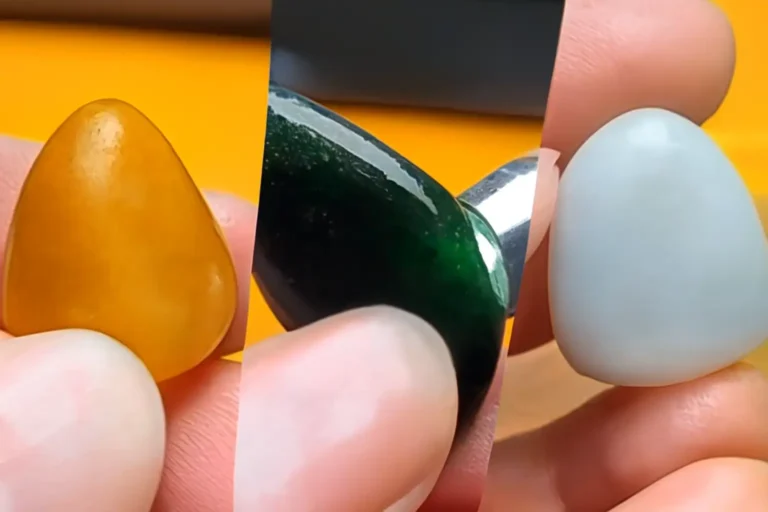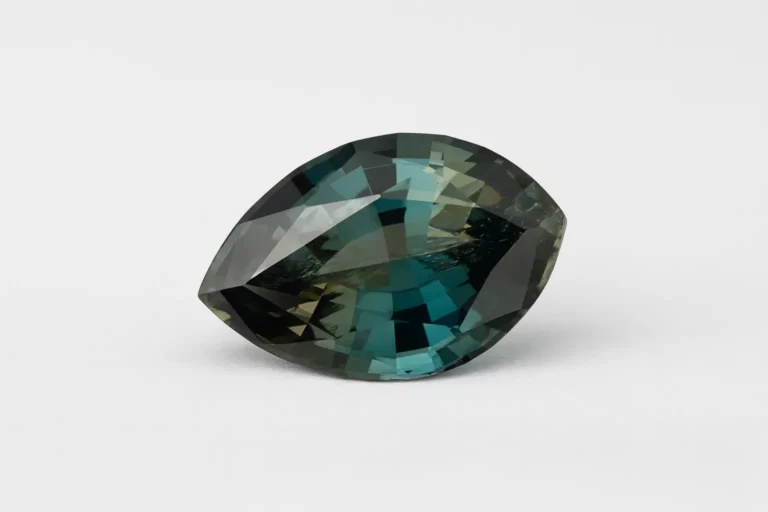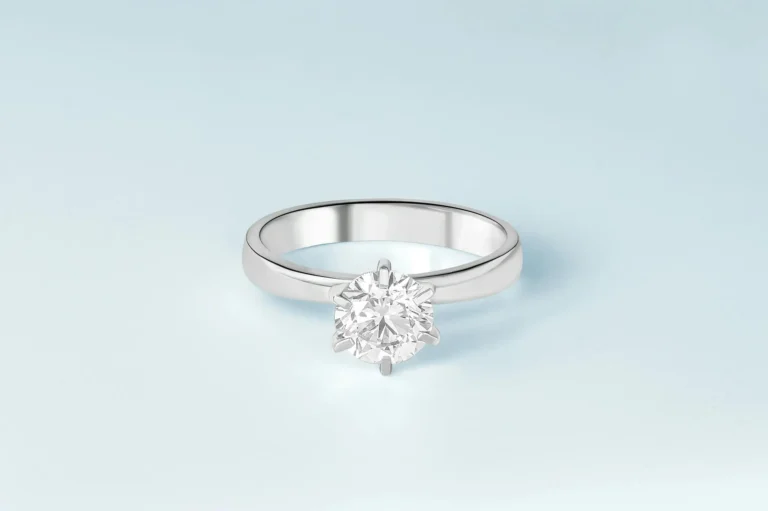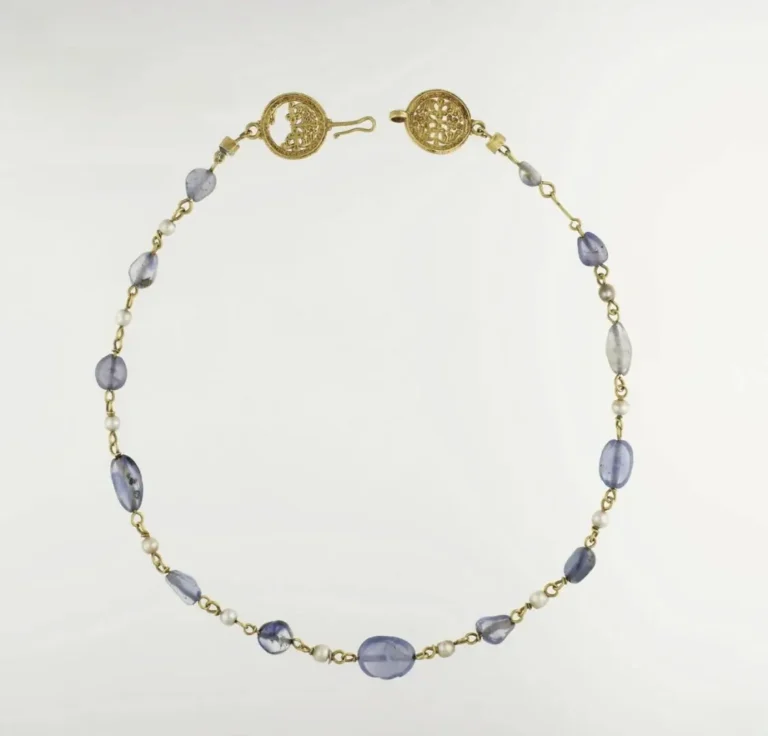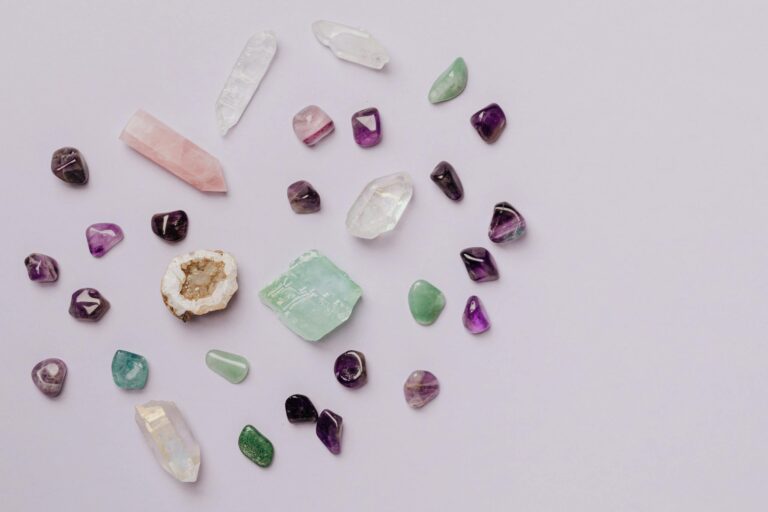Blessing Your Luck: Handcrafted Vintage Earrings to Bring Good Fortune with the Right Jewelry Choice
Vintage handmade jewelry carries a spiritual power that should never be underestimated. History has shown us that it drives people to push forward even in the face of adversity. From ancient times, humans sought strength from the mysterious forces of the cosmos and the natural world. Today, many believe that “everything has a spirit,” and so, they wear vintage handmade jewelry adorned with sacred symbols as amulets. Everyone hopes for divine protection and eternal luck. A common practice among religious followers is to engrave scriptures or mantras on their vintage handmade jewelry and carry them as a way to ward off misfortune, attract blessings, and ensure peace and safety.
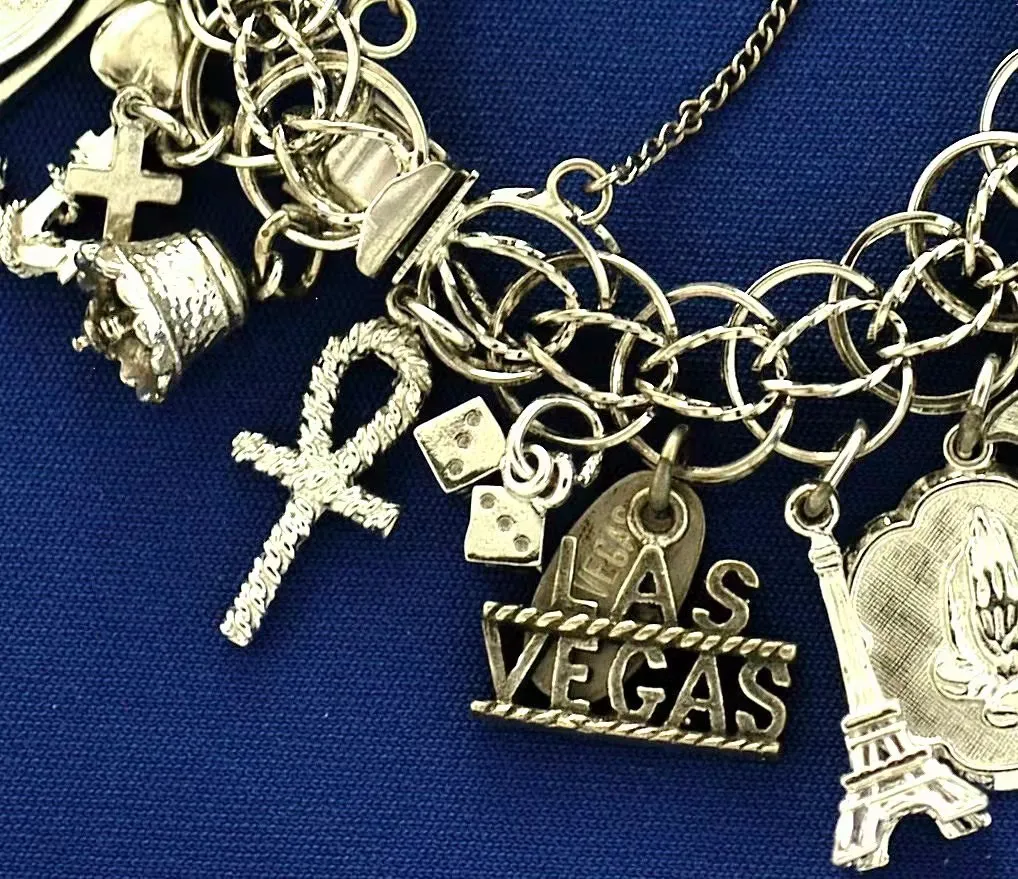
“Mysticism Meets Vintage Handmade Jewelry: Robert Oksuzyan’s Tarot-Inspired Designs at Godsforge”
This new wave of mysticism enthusiasts has also entered the jewelry world. Take Robert Oksuzyan, founder of the Russian jewelry brand Godsforge, as an example. Drawing inspiration from symbols found in “Tarot cards,” he uses enamel micro-painting techniques to bring these mystical patterns to life. The result is a vintage and luxurious style that imbues the jewelry with a mysterious protective energy.
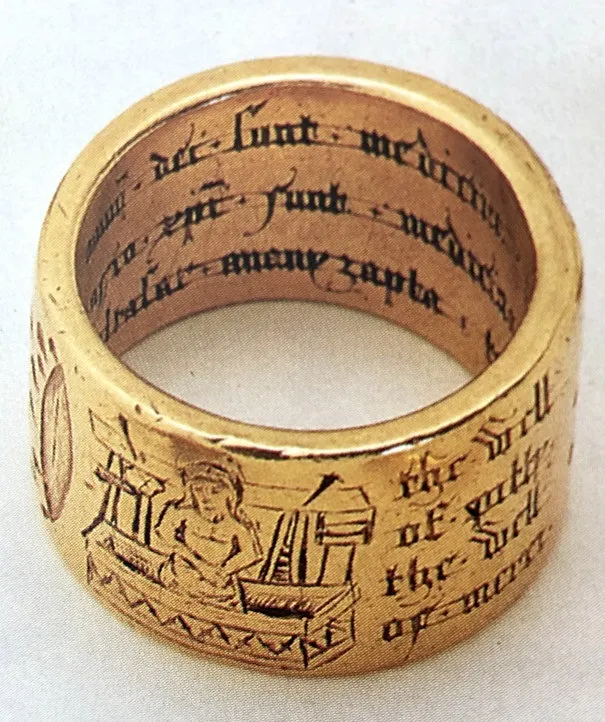
Part One: Your Beautiful Wishes, Protected by Vintage Handmade Jewelry
Undoubtedly, “protective amulet” jewelry is an eternal topic throughout history, and it remains one of the most treasured pieces in people’s jewelry boxes. It is not just an accessory, but a spiritual symbol and a guardian of ideals.
1.Four-Leaf Clover-Vintage Handmade Jewelry
People have associated the four-leaf clover with “luck” ever since they first discovered it. Legend has it that Napoleon stumbled upon a four-leaf clover during his military campaign. As he bent down to admire it, a bullet narrowly missed him, grazing his back. Thus, he narrowly escaped disaster.
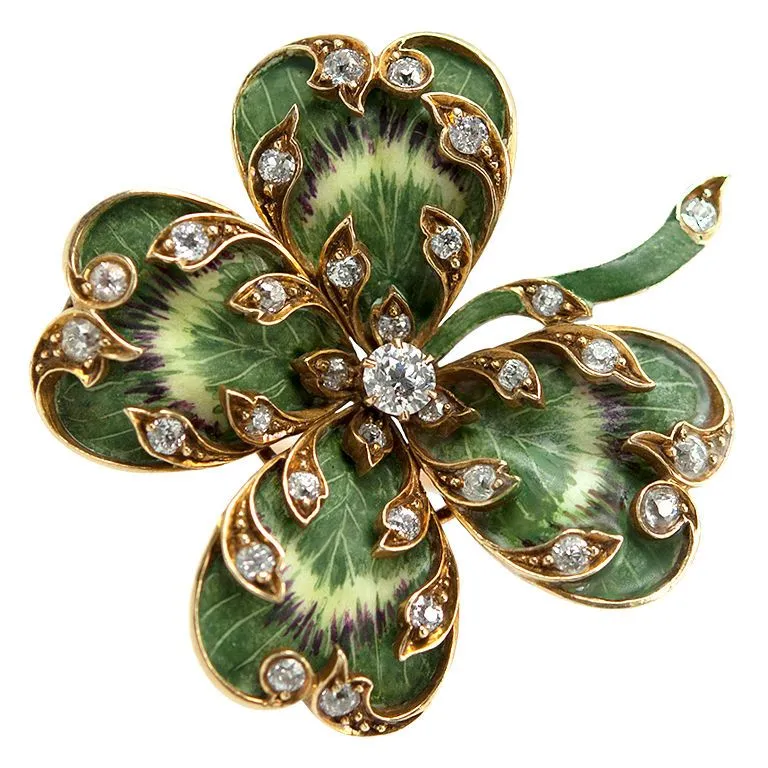
But why has the four-leaf clover become a universally recognized symbol of luck? The main reason, I believe, is that finding a four-leaf clover in nature is incredibly rare, with a probability of about one in a hundred thousand.Because the four leaves are so rare, people have given them the most beautiful meanings in the world: hope, faith, love, and luck. They remind us that beautiful things are hard to come by, and even when we find them, we should cherish them deeply.
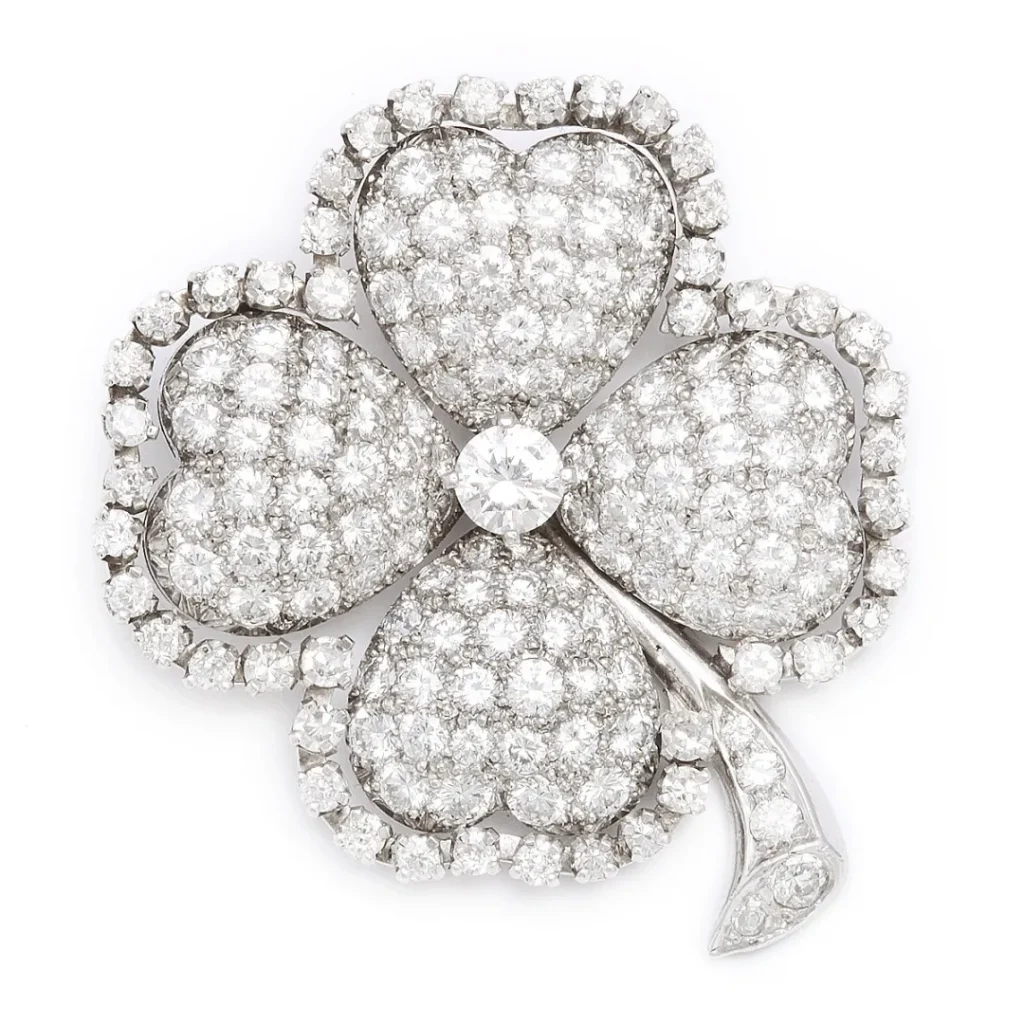
2.Ladybug-Vintage Handmade Jewelry
In the West, the ladybug is a natural creature symbolizing luck. As far back as the Middle Ages, people believed ladybugs were sent by the heavens to protect vineyards from pests. The wings and beautiful shell of the ladybug symbolize protection and the arrival of good fortune.
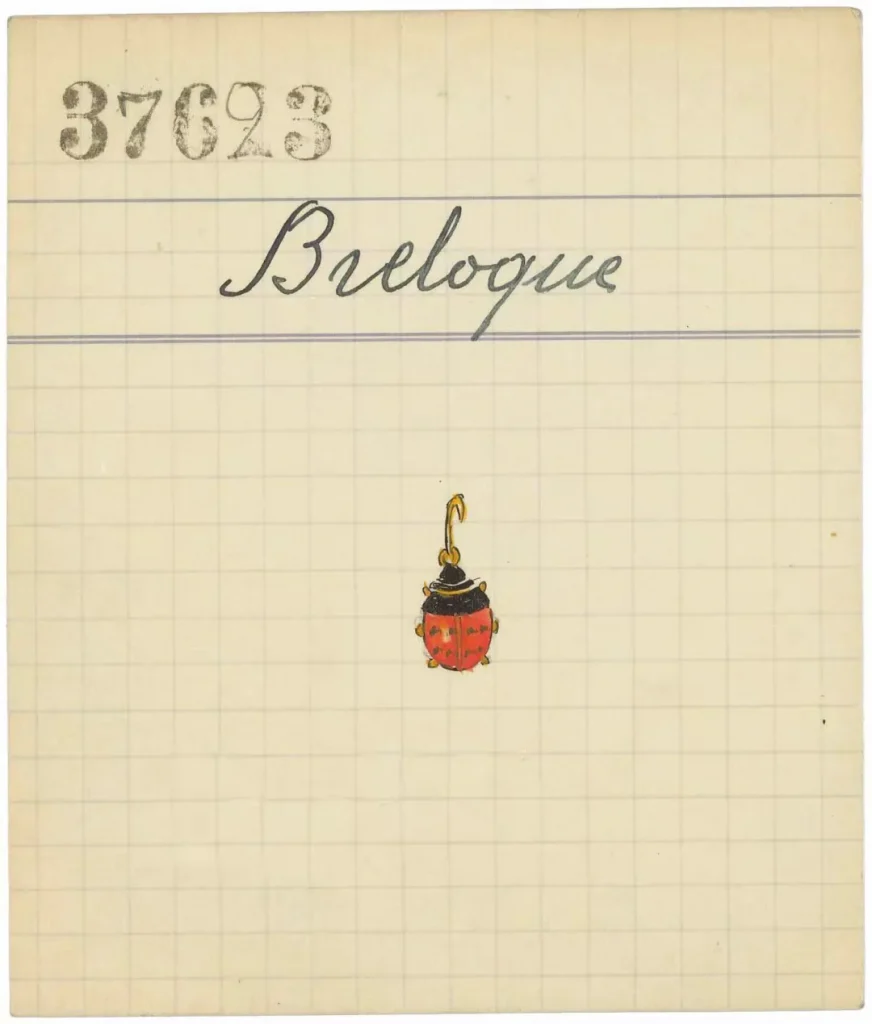
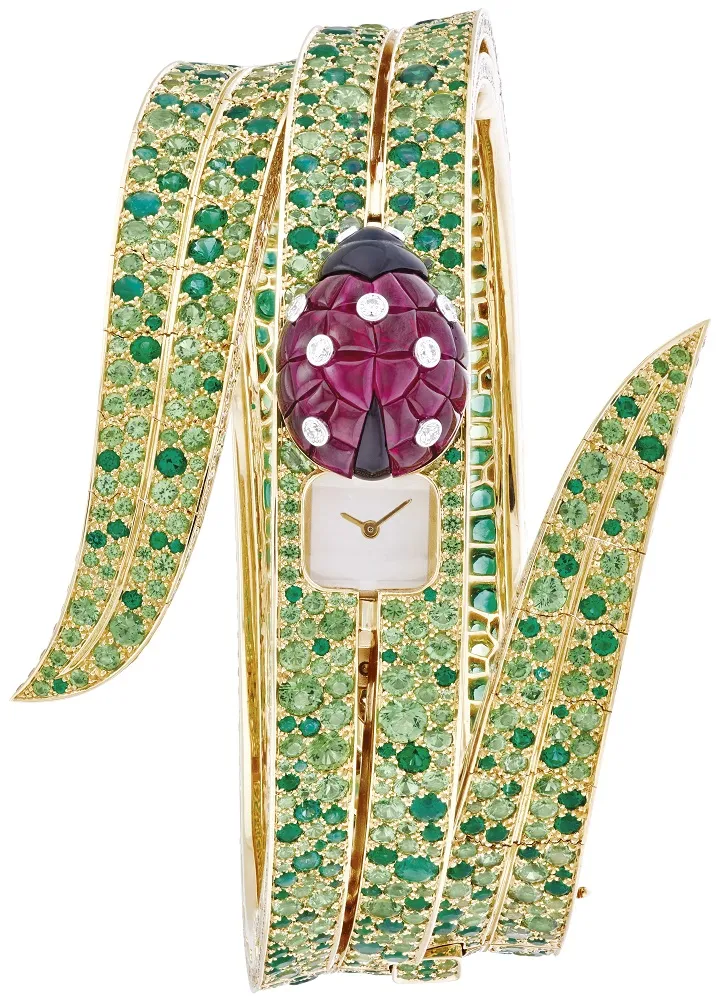
In the season of renewal, especially during spring, ladybugs have become a symbol of beauty and good fortune. Van Cleef & Arpels has even named a collection featuring ladybugs “Lucky Spring,” bringing a refreshing vibrancy to the enchanting garden of the maison. This collection perfectly captures the lively energy of spring, with the ladybug serving as a charming and lucky emblem.
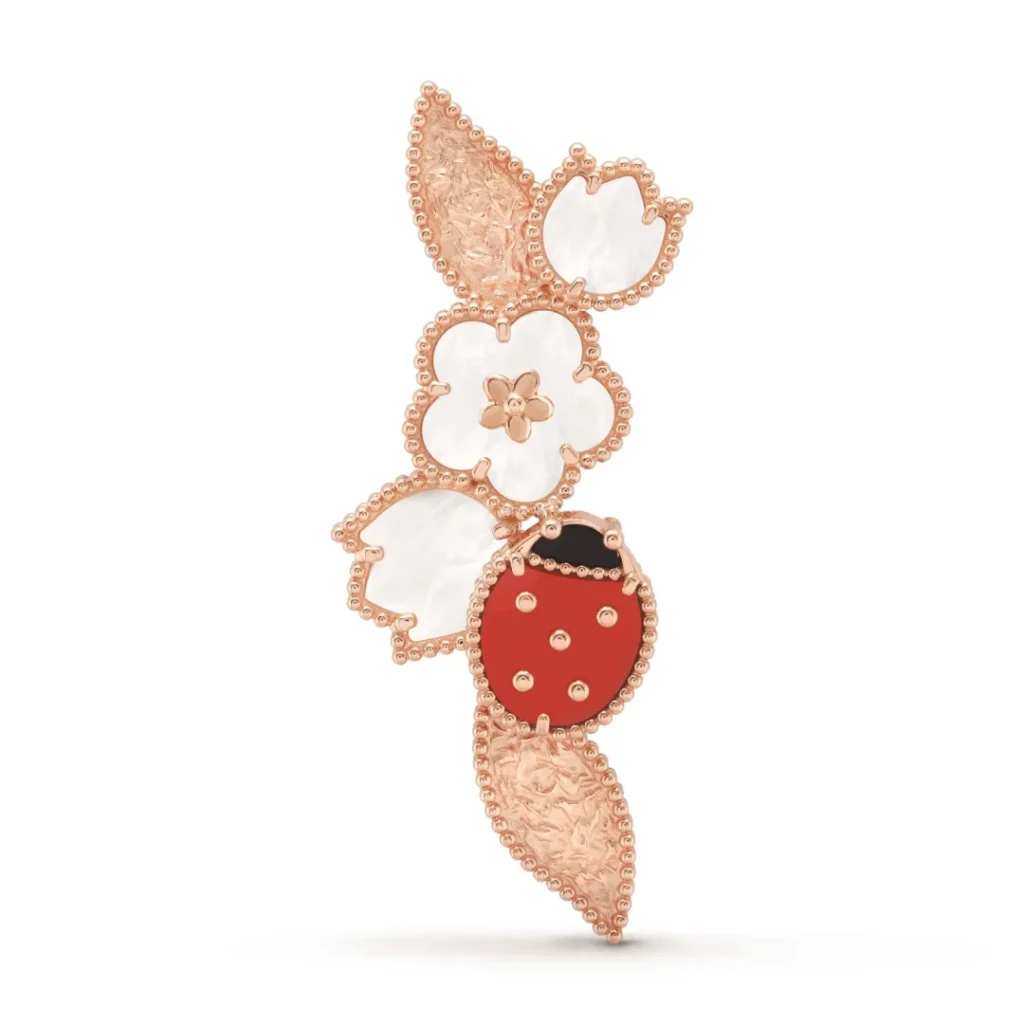
3. Stars
Since the beginning of human thought, our curiosity and exploration of the vast cosmos has never stopped. The ancient Greeks saw diamonds as fragments of stars that had fallen to Earth. In Roman mythology, people represented Venus, the goddess of love and beauty, with the evening star.
As a result, stars have long served as a symbol and a medium through which people express their longing for the beauty and wonders of the world.
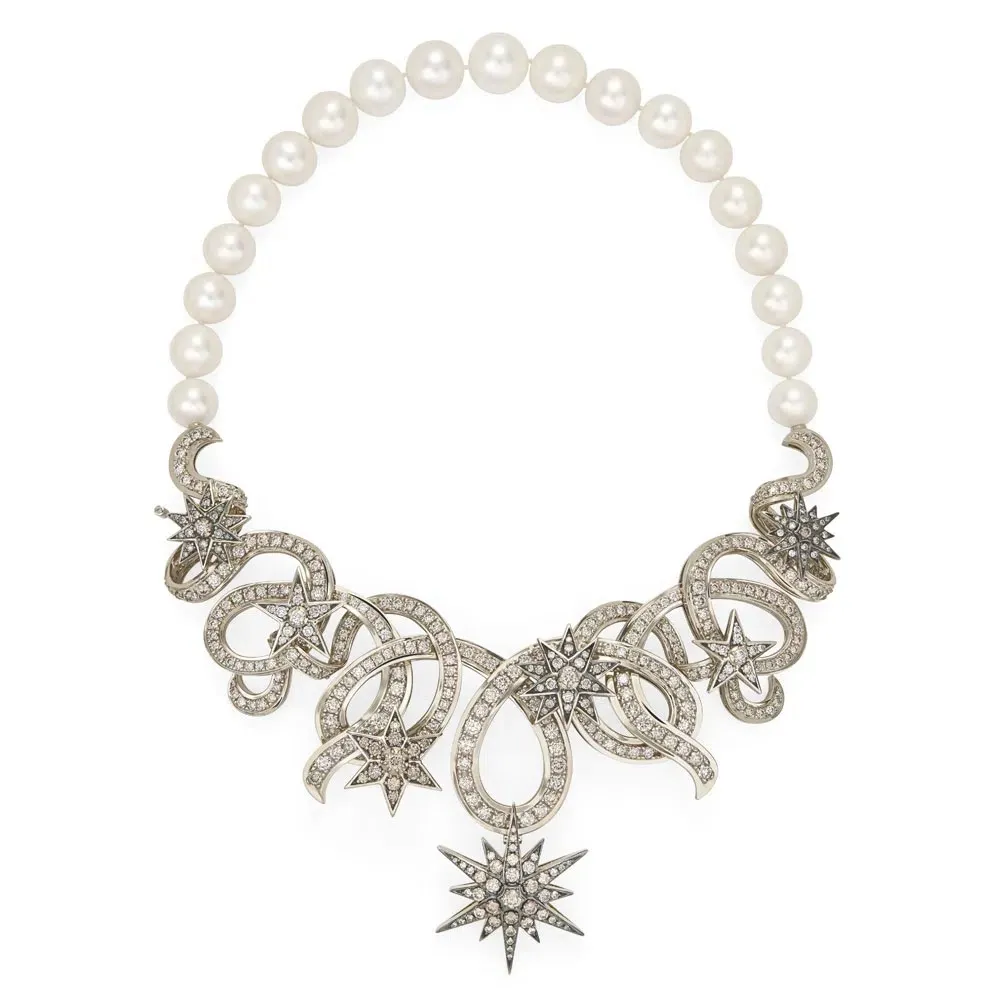
In 1932, Chanel designed diamond jewelry for the first and only time, with the comet being one of the five themes. During the Great Depression, the diamond business declined significantly, so the Diamond Syndicate asked Mademoiselle Chanel to find a solution. She created a series of pieces symbolizing hope, and when the news broke, it became headline news in Paris. The collection indeed reignited confidence among many in the fashion world.
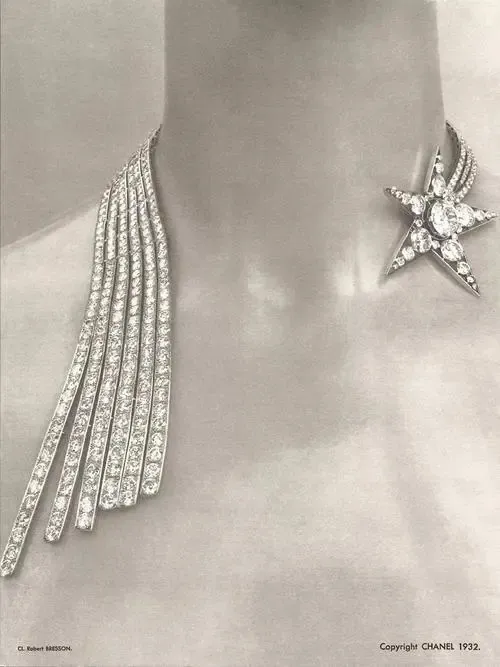
4.Sacred Scarab
The ancient Egyptians deeply worshipped the sun as the source of all light. They believed that a mysterious force in the sky guided its movement.The Egyptians observed that the scarab beetle, living in the desert dust, rolled dung balls in a motion similar to the sun’s trajectory, day after day. This led them to reflect on birth, transformation, and resurrection. They named the beetle the “Sacred Scarab,” meaning “creation.”
Since then, the scarab became not only a symbol of rebirth and creation but also an emblem of immortality and a protective amulet believed to ward off evil.
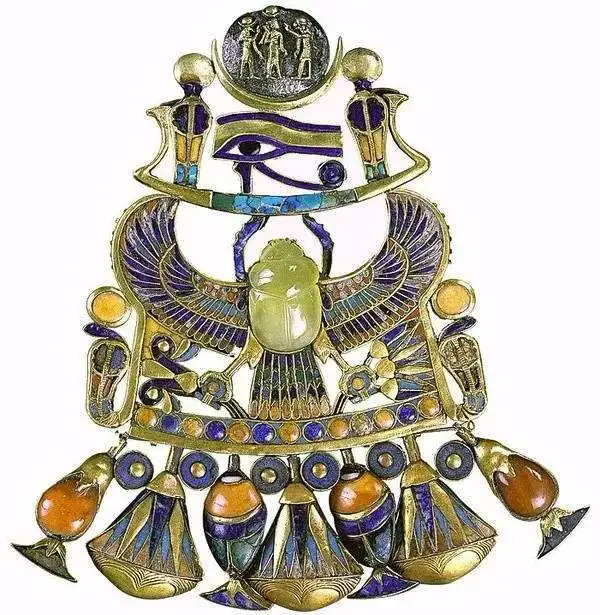
Cartier once had a deep fondness for the sacred scarab. This brooch, made in 1924, features a smoky quartz scarab acquired from Egypt, complemented by ceramic shards, diamonds, and emeralds. It combines the ancient Egyptian form and symbolism with the Art Deco style. People in that trend-driven, self-expressive era must have highly sought after this piece!
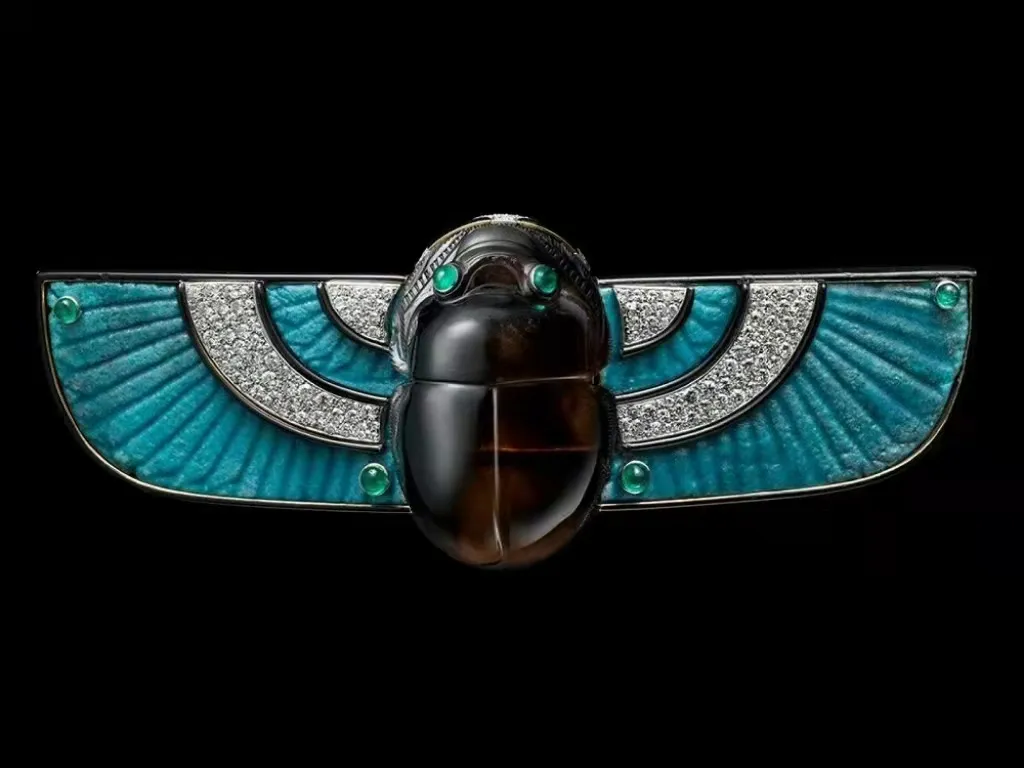
Today, there are not many jewelry enthusiasts who still collect or wear sacred scarab pieces. Even though it remains a niche, some designers continue to experiment with modern interpretations of this ancient symbol. For example, German jeweler Hemmerle, in a collection of archaeological revival jewelry, has used the ancient Egyptian scarab seal as the “centerpiece.” One glance at the piece immediately evokes a sense of mysterious energy.
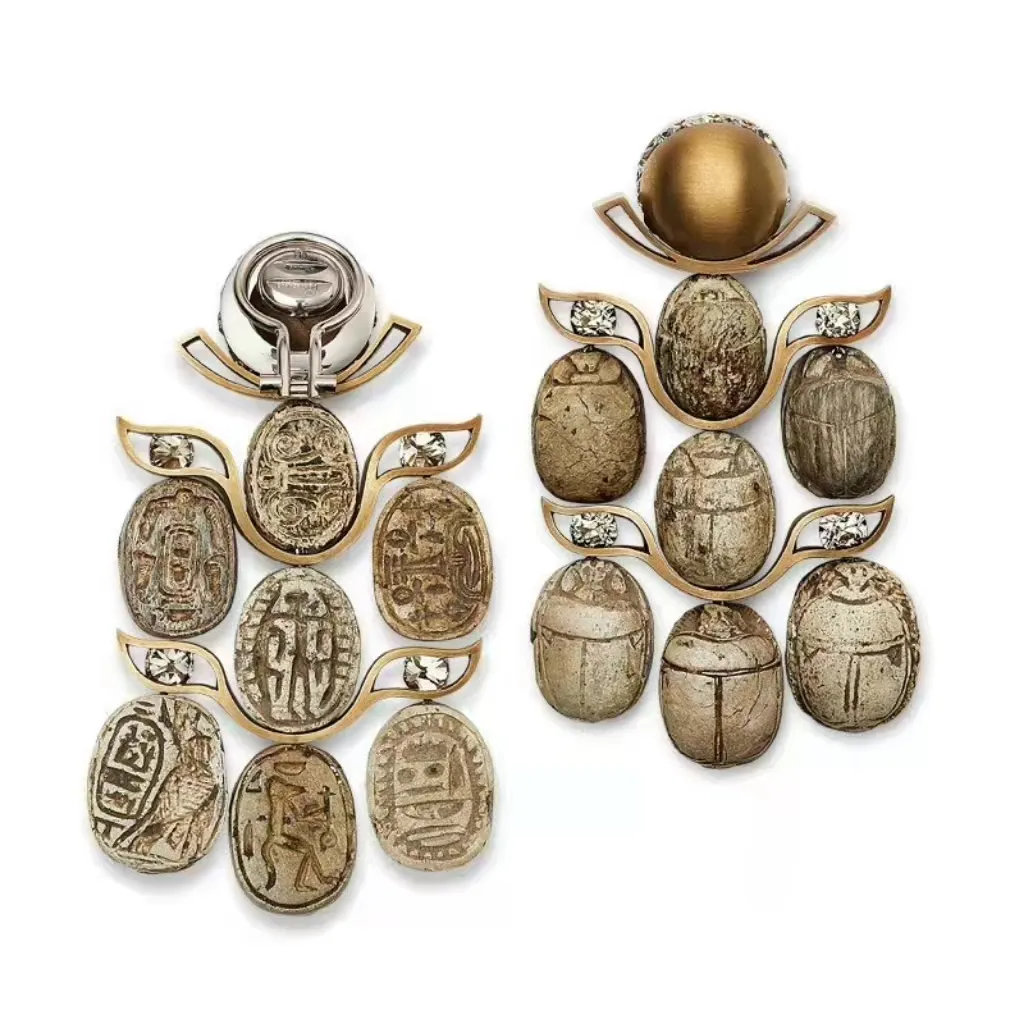
5.Evil Eye
The belief in the Evil Eye originated in the Mediterranean region, where people have believed for thousands of years that a malicious gaze could cause harm and misfortune. To protect themselves from the curse of the evil eye, individuals would wear specific jewelry as amulets. In Turkey and nearby areas, there exists a cultural symbol of “an eye for an eye, poison for poison.” By wearing the evil eye symbol, one could ward off the power of jealousy, avoid bad luck, and ensure peace and safety.
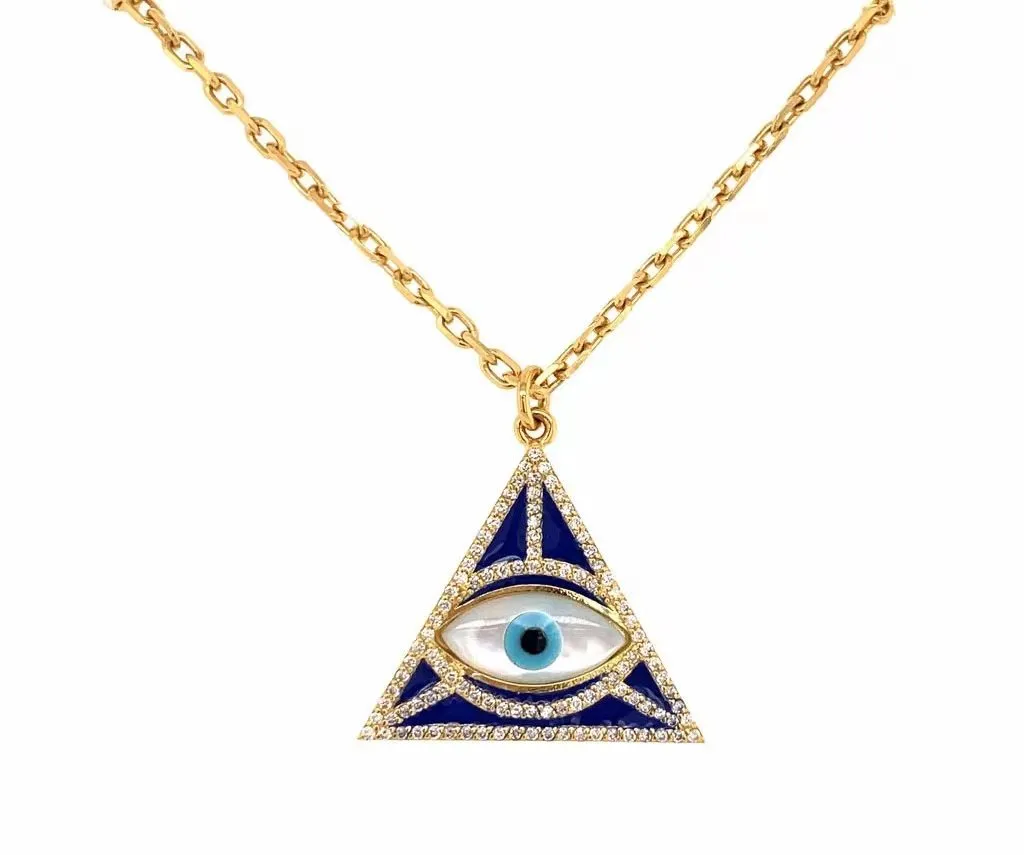
In Egyptian culture, the “Eye of Horus” is a symbol of profound spiritual significance. The ancient Egyptians regarded Horus, the falcon god, as the guardian of the pharaohs and a symbol of divine protection and supreme royal power. Legend has it that his right eye symbolizes the sun, possessing the power to perceive all things in the world, while his left eye can distinguish between good and evil, and holds the ability of resurrection.
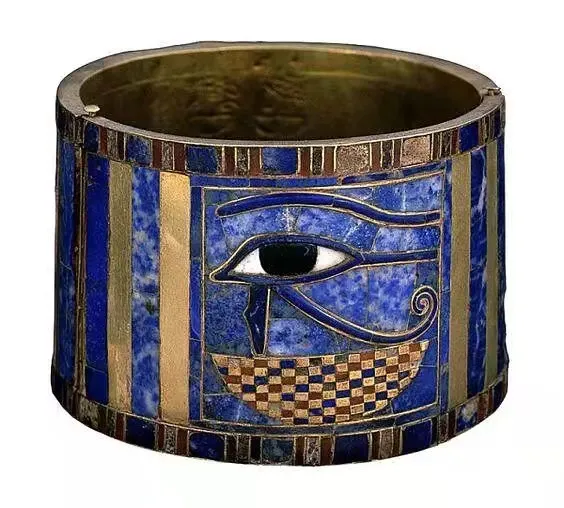
6.Heart Shape
In ancient Greece, people viewed the curves of the female body as a refined form of art. According to legend, Venus, the goddess of love, won everyone’s heart not only because of her beauty, but also because of the heart-shaped curves of her hips.
From that time on, people began to associate the “heart shape” with romantic and passionate love. They also believed that the shape resembled two hearts coming together, turning the symbol of love into a representation of true connection and genuine affection.
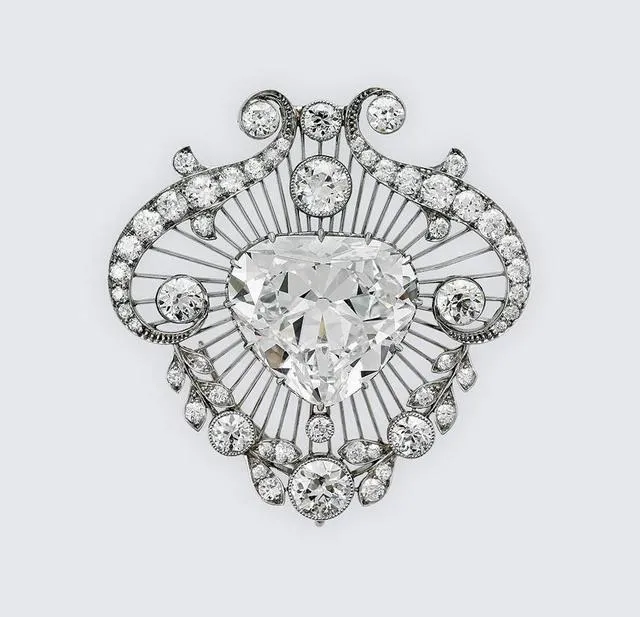
Queen Mary of the United Kingdom collected this heart-shaped diamond brooch, which features the famous 18.8-carat Cullinan V diamond at its center. Queen Elizabeth II later inherited it, and it remains one of the few heart-shaped jewels in her collection. No matter how someone styles it, the brooch always brings a touch of youthful romance.
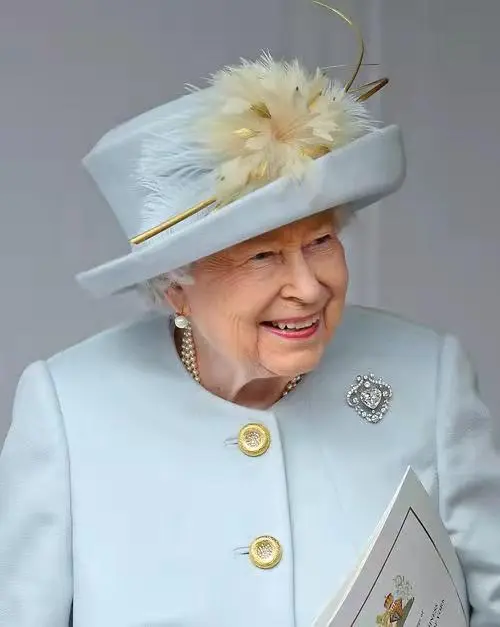
In 1957, the Duke of Windsor, to commemorate their 20th wedding anniversary, carefully designed and created this heart-shaped brooch. The central motif combines the letters “W” and “E,” representing the initials of their names, while the Roman numerals XX, set with rubies, symbolize 20. Although this piece of jewelry exudes a rare sense of formality and elegance compared to their other custom pieces, the deep affection it represents is unmistakably present!
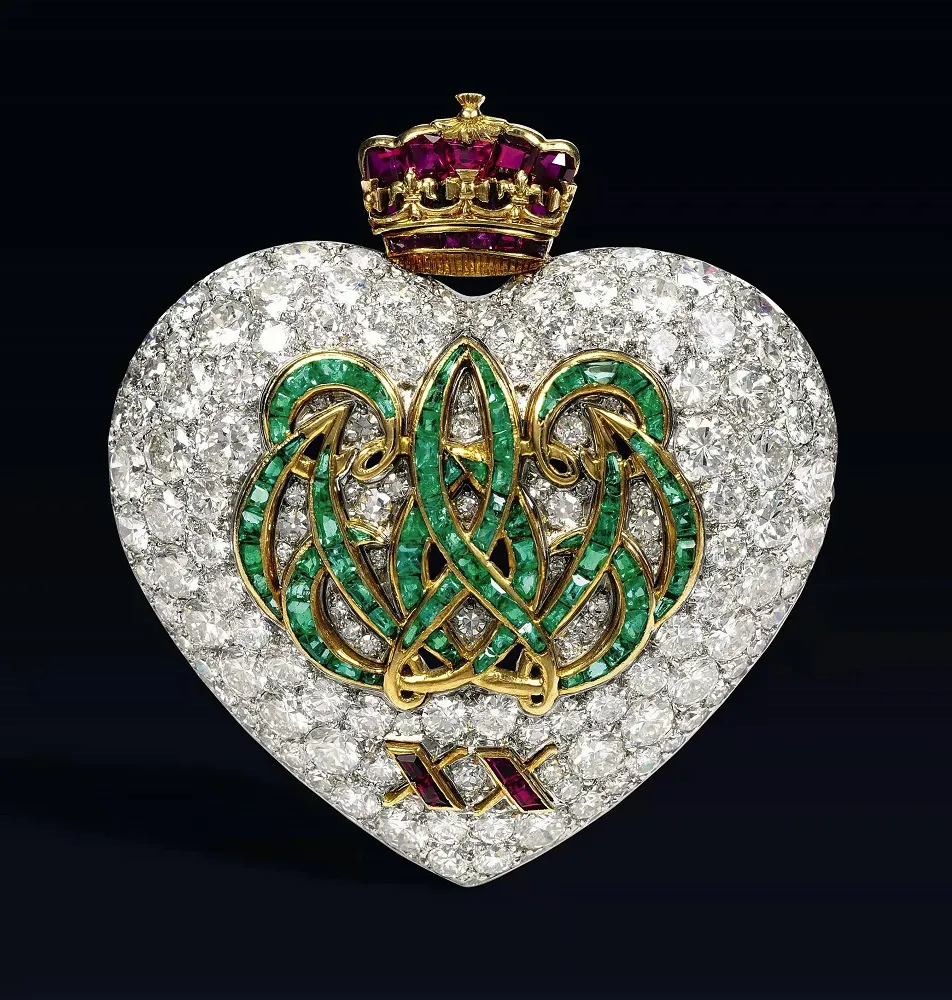
Part Two: Wear Your Lucky Gemstone with Vintage Handmade Jewelry and Wish You Endless Fortune
Lucky gemstones have long been believed to bring positive energy and good fortune. From ancient cultures to modern-day practices, people wear these precious stones as symbols of protection, success, and happiness. Whether it’s the vibrant emerald for abundance or the calm amethyst for peace, each gem is thought to have its unique power to enhance one’s life.
So, wear your lucky gemstone and may it bring you good fortune wherever you go!
1.Ruby
As the “King of Gemstones,” rubies have long been valued for their supreme energy in both the East and the West. The Bible praises them as the most precious of all gems. In India, people view rubies as symbols of power and youthful vitality. Since the Middle Ages, Europeans have believed that rubies bring health, wealth, wisdom, and successful love. In China, people choose rubies to bring joy and ward off evil, making them a top-tier choice for both celebration and protection.
Related Reading:
- Ultimate Ruby Buying Guide – Color, Carat, Clarity & Treatments Explained
- Pigeon’s Blood? Royal Red? Understanding Six Major Ruby Grading Systems
- What Is Windowing in Gemstones and How Can You Avoid It?
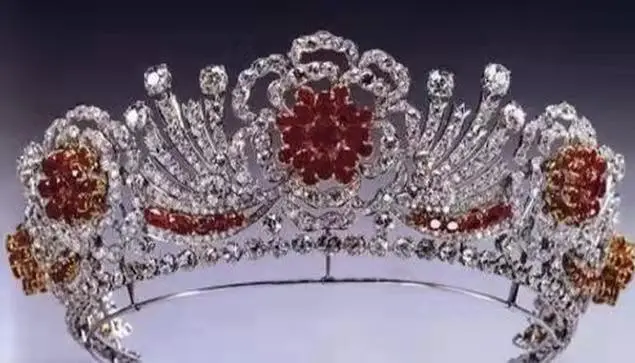
This crown is one of Queen Elizabeth II’s most treasured pieces of headwear, adorned with 96 precious rubies from Myanmar. These rubies were a wedding gift presented by the people of Myanmar to Queen Elizabeth II and the Duke of Edinburgh in 1947.
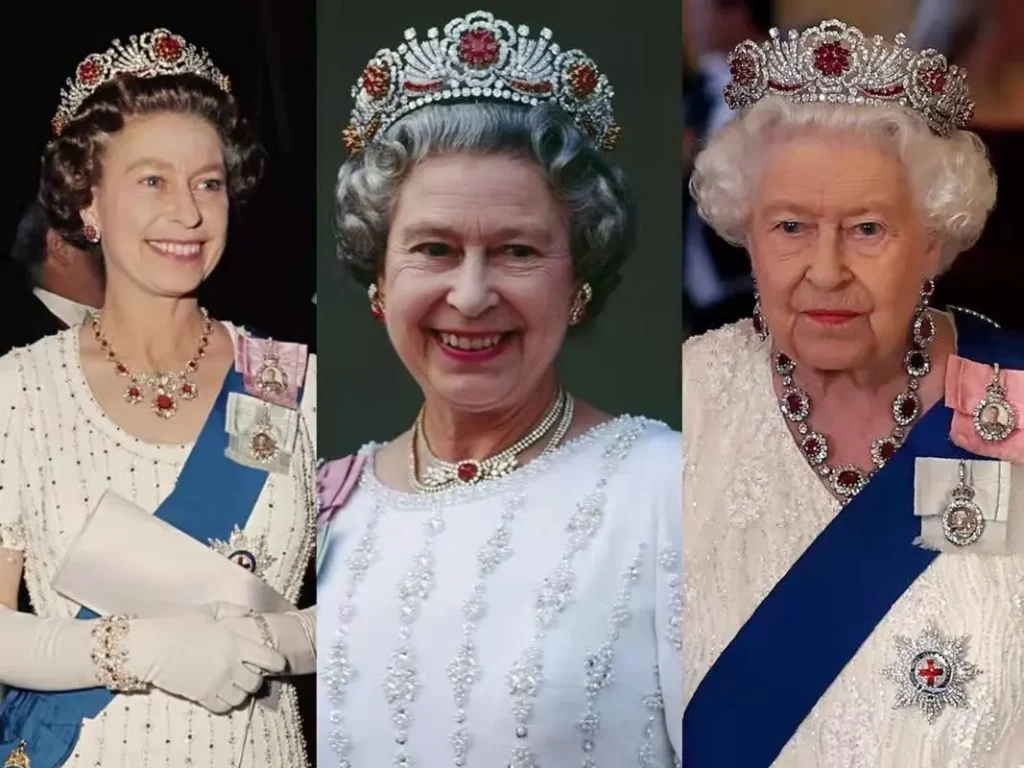
2.Garnet
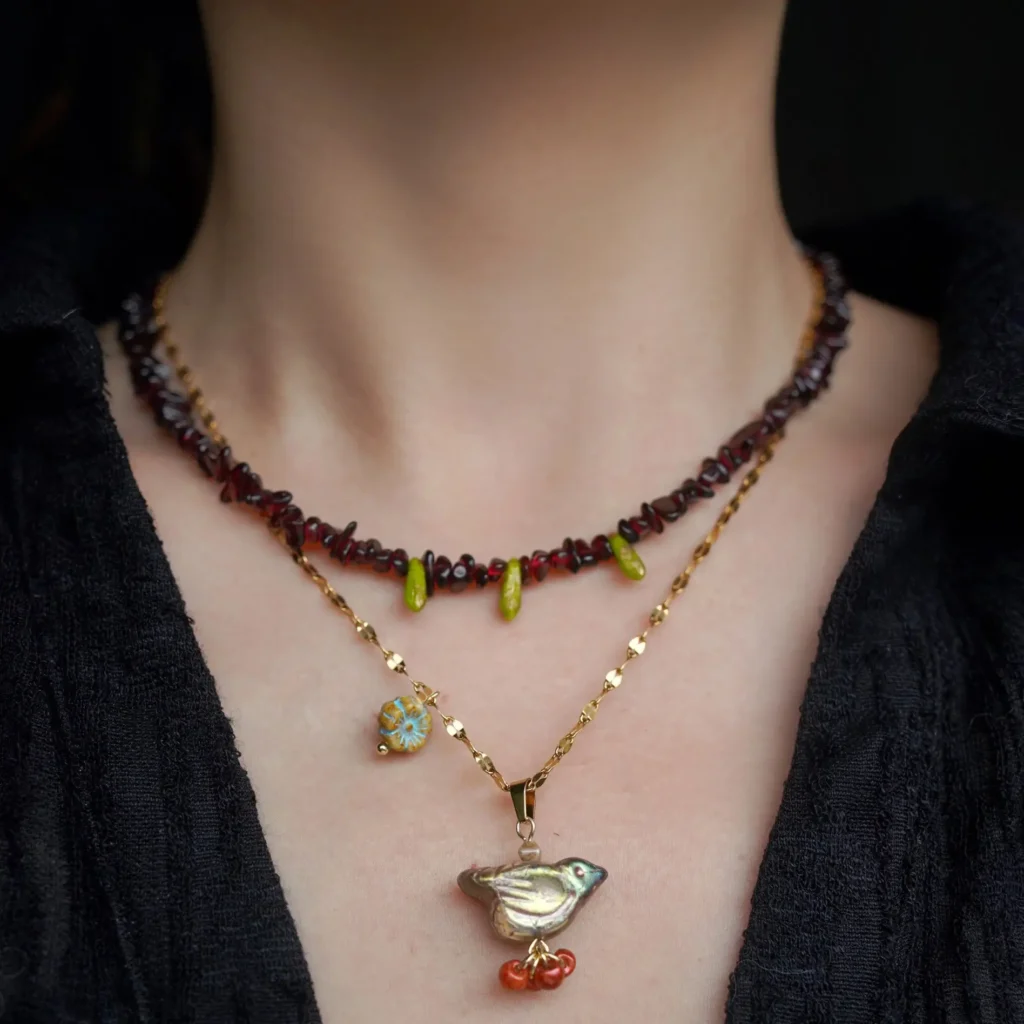
Garnet is the birthstone of January, symbolizing friendship, loyalty, and chastity. In addition, garnet is believed to help eliminate negative emotions and bring more confidence. So, even if you’re not born in January, wearing a red garnet as a lucky gemstone for the year is a perfect choice.
Learn more about garnet gemstones in the Peonyjewels blog article: The Ultimate Guide to the Garnet Family – Types, Colors, and Buying Tips.
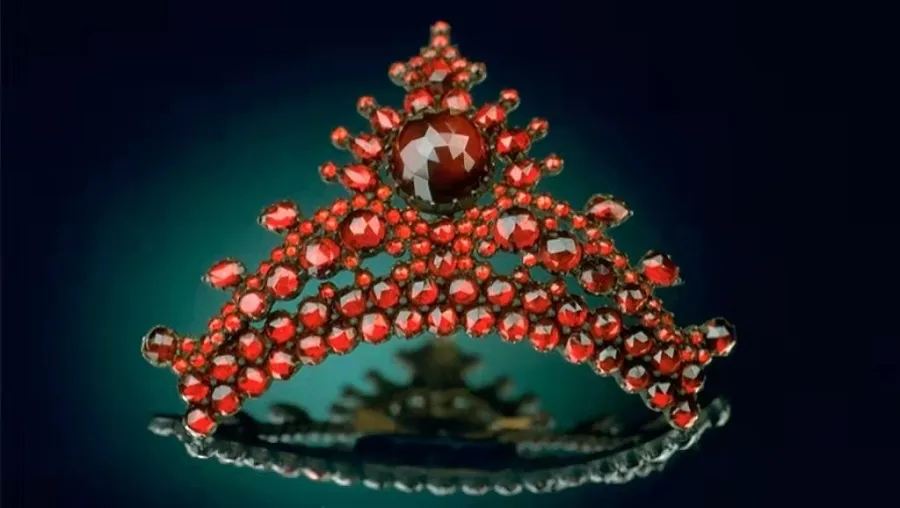
This eagle brooch is one of Louis XIV’s most precious collections. While the entire piece is rich with captivating details, the most striking feature is the large red garnet at the center, which upholds the powerful presence of the eagle, symbolizing the majesty of a sovereign ruler.
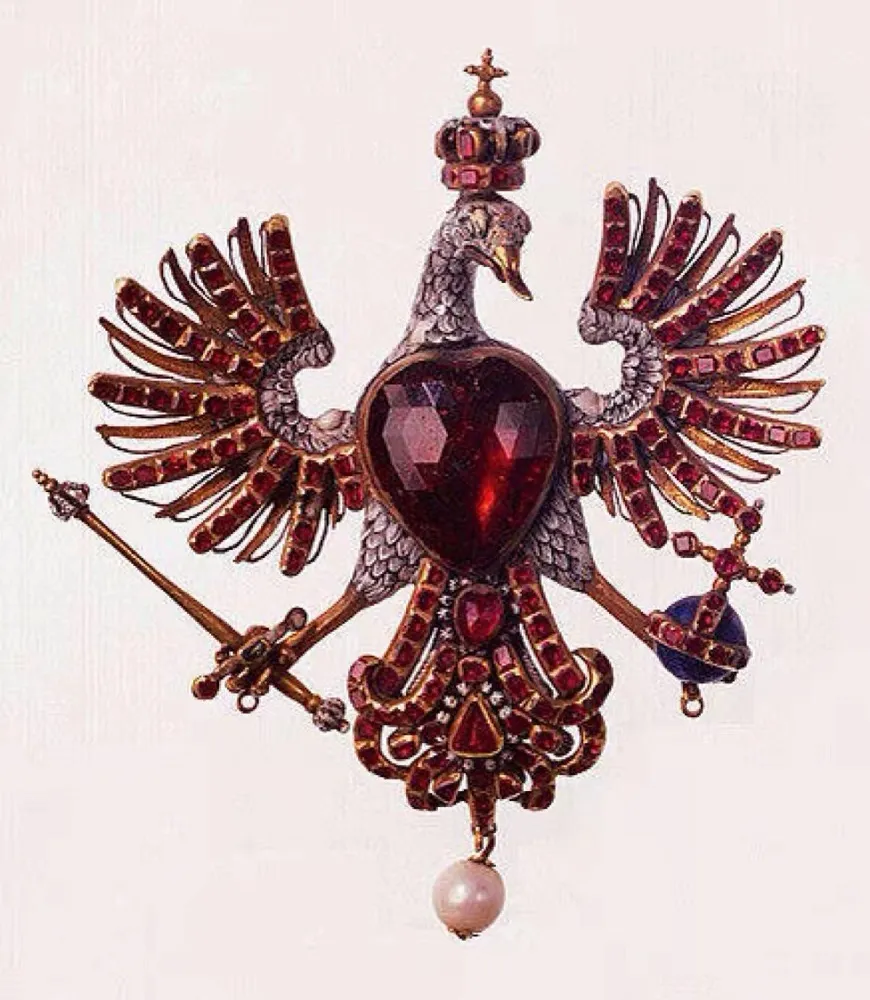
3.Amethyst
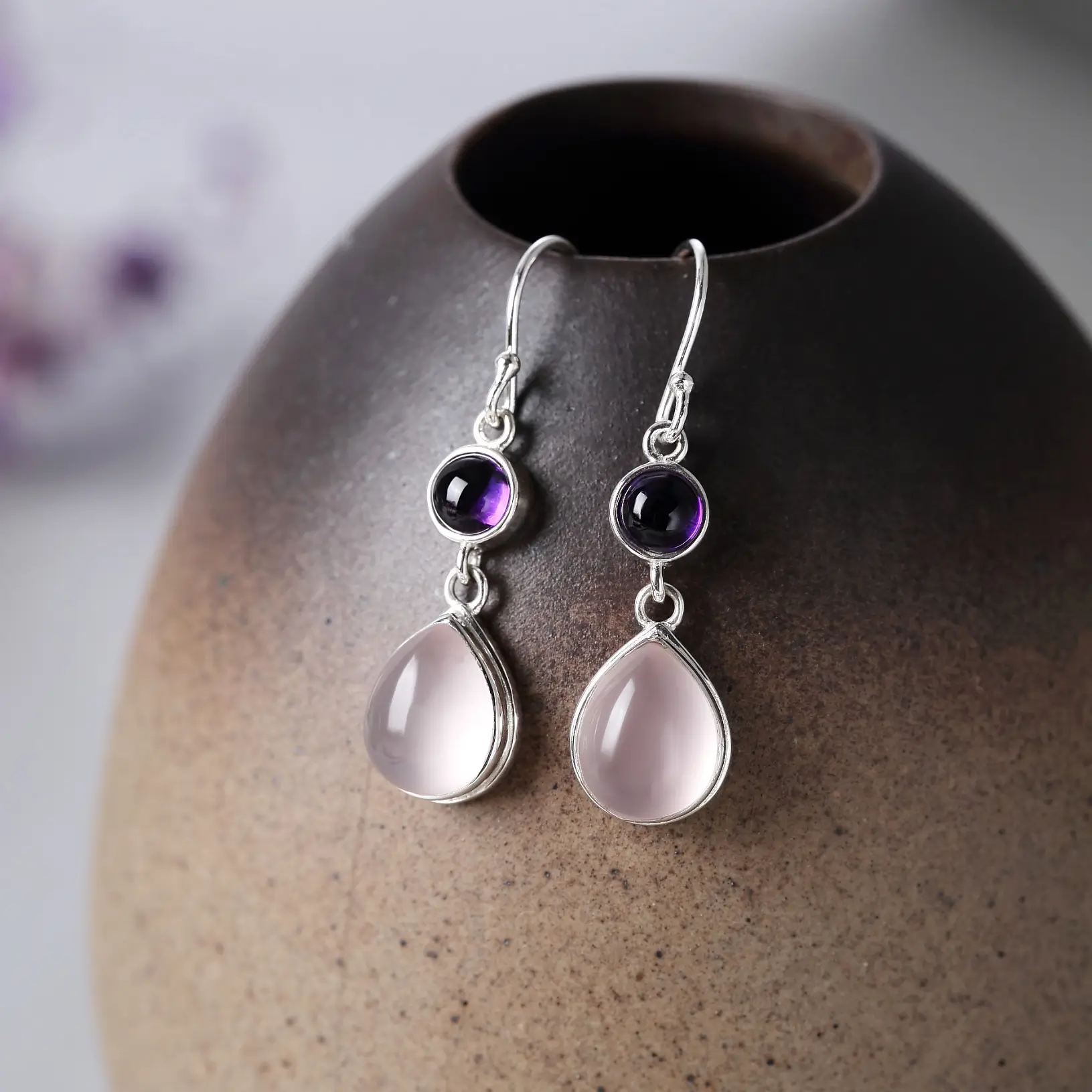
Although crystals are not as precious as other gemstones, they are renowned for their powerful ability to bring about wishes and change. Amethyst, derived from the Greek word Amethystos, meaning “not drunk,” symbolizes clarity and sobriety. It is said that wearing amethyst can help maintain alertness in business while also assisting in controlling oneself and resisting external temptations.
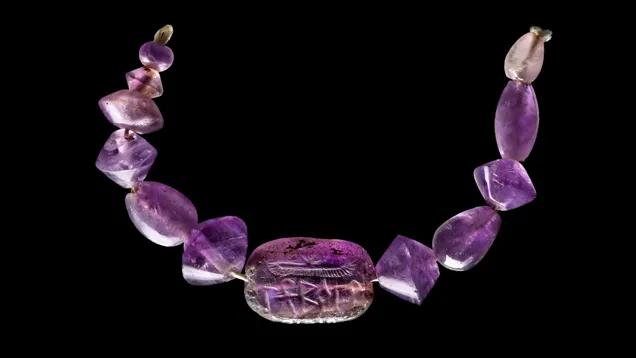
According to Eastern Feng Shui principles, amethyst not only carries the auspicious meaning of “purple energy coming from the East,” but also helps alleviate anxiety, bring good luck, and enhance thinking and spirituality. Additionally, it is revered as the “stone of social connections,” helping you attract benefactors and influential people in your life.
Learn more about amethyst in the Peonyjewels blog article: Amethyst—The Aristocratic Beauty in Everyday Life.
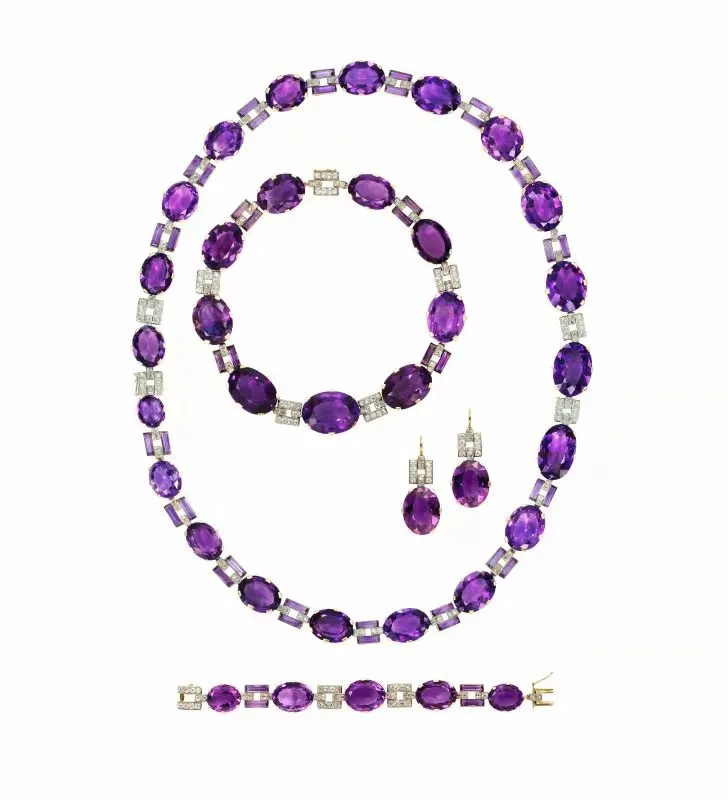
Part Three: Want to Double Your Luck? Create a Custom Charms Collection with Vintage Handmade Jewelry
You may have noticed that in different regions and cultures, there are many types of totems, shapes, or gemstones that serve as “protective charms,” each with its own unique meaning. They symbolize various things like warding off evil, bringing good luck, attracting wealth, promoting health, ensuring safety, or holding emotional significance. Given the diverse protective needs of individuals, why not string these “charms” together on a single necklace? Not only does it make them easier to wear, but it also doubles your luck!
The History of Charm Necklaces
Looking back through history, charm necklaces with different symbolic meanings have existed since around 1000 BC. For example, an ancient Egyptian necklace features protective symbols such as an agate turtle, a daisy pendant, two Horus falcons, and three scarabs. These charms were strung together as a powerful ensemble.
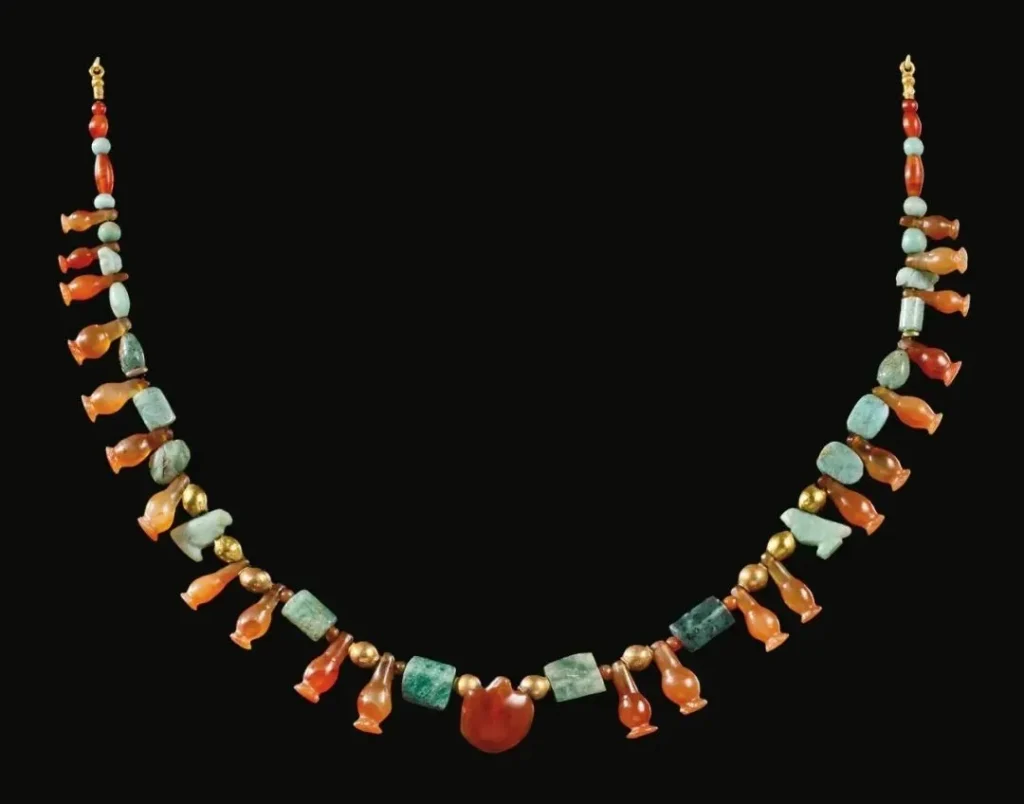
Queen Victoria’s Influence
The popularity of this type of vintage handmade jewelry truly skyrocketed thanks to the influence of Queen Victoria! Not only did the Queen personally love wearing them, but she also enjoyed giving them as gifts to others.
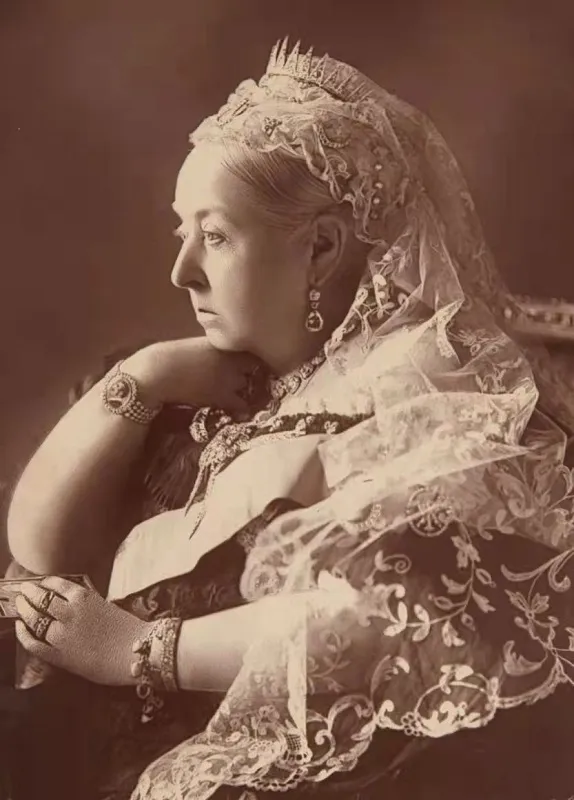
The most famous of these charms is the one made entirely of small boxes. Queen Victoria had the hair of each of her children sealed in different enamel boxes. After the death of her beloved Prince Albert, she added a pendant engraved with an inscription and a miniature photo. To this day, it remains one of the most cherished pieces of jewelry in the British royal collection.
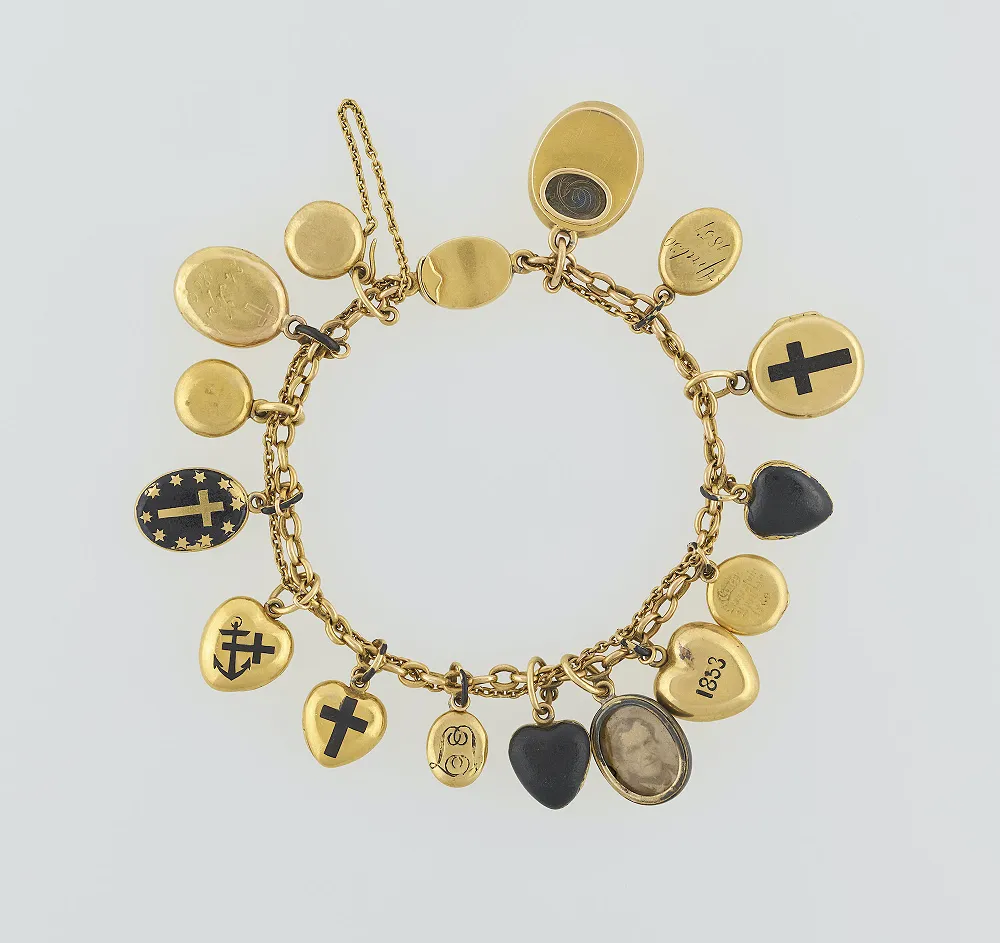
Socialites and Celebrities Embrace Charm Jewelry
Later, jewelry that allowed for charms to be added at any time became popular among socialites and celebrities. Elizabeth Taylor, for instance, made the charm bracelet her personal symbol of good wishes. She often wore charms such as ancient coins, a Christian cross, Egyptian amulets, the Star of David, and turquoise talismans—each representing a cherished protective symbol.
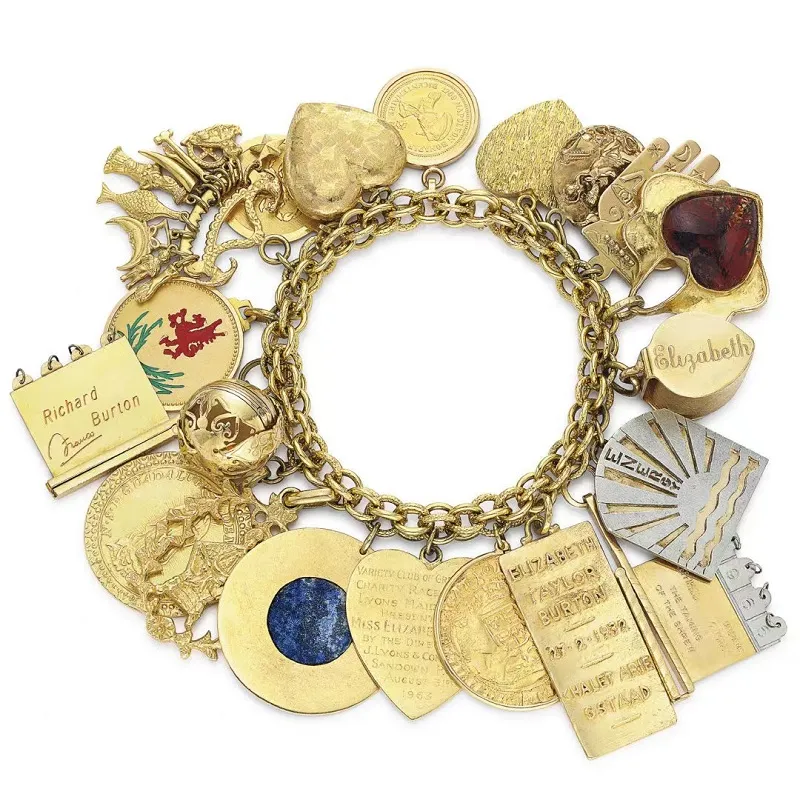
Coco Chanel was also an undeniable charm enthusiast. Although her jewelry could be bold, every element had symbolic meaning. Examples include her lucky number 5, Leo as her guardian zodiac sign, the Maltese cross symbolizing bravery, and a wheat sheaf representing strength and prosperity. These motifs continue to define her brand today.
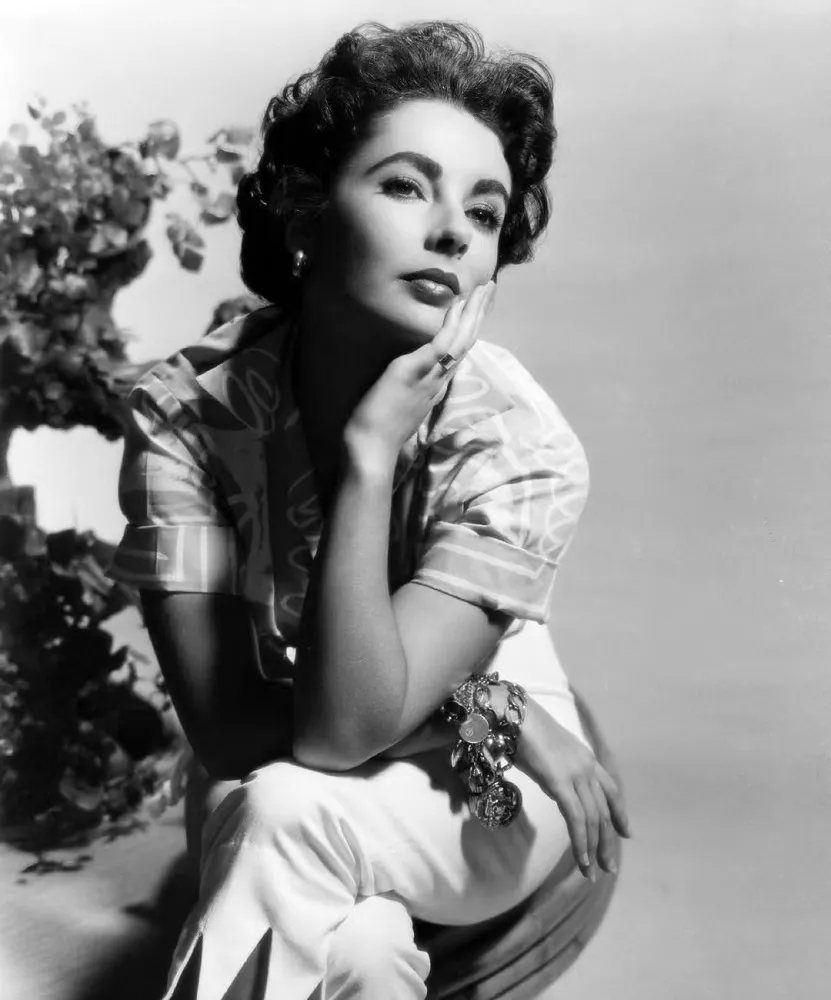
Find Your Own “Guardian” Charm
By now, you’ve probably decided on the perfect “guardian” for yourself. So what are you waiting for? Go ahead and get yourself some personalized protective charm vintage handmade jewelry, like Peonyjewels handmade vintage earrings, and carry a piece of timeless artistry with you.


